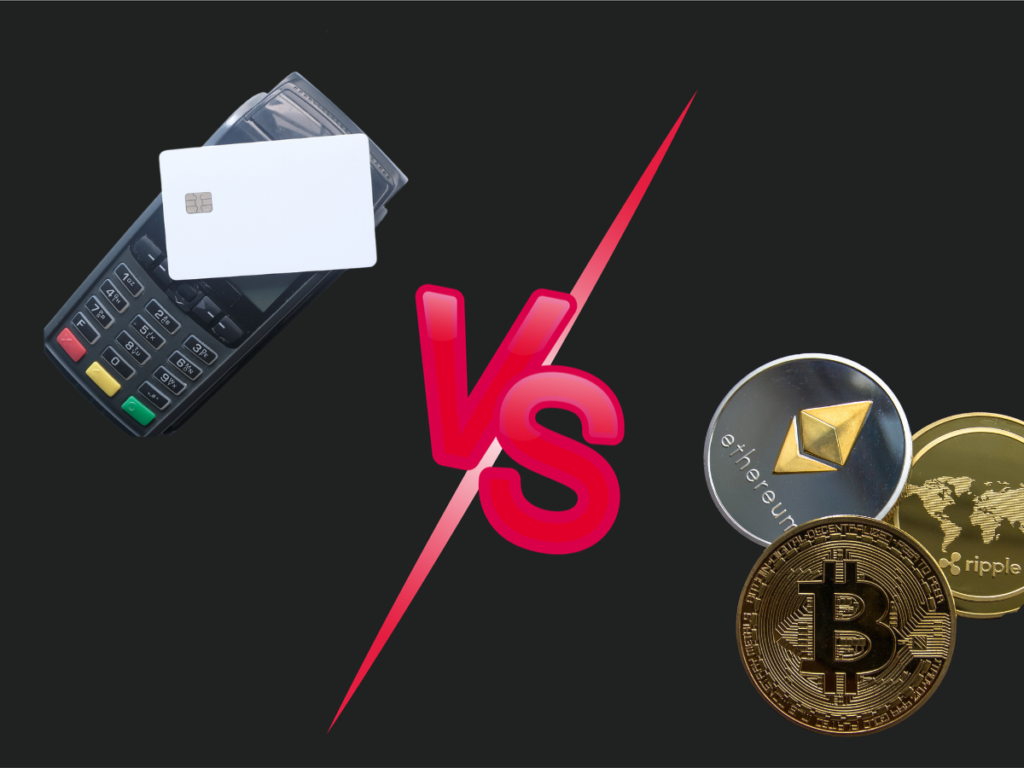Bitcoin and Ethereum are lauded for their potential to replace existing payment methods. This article examines if decentralized blockchain technology threatens credit cards and bank transfers.
Cryptocurrencies like Bitcoin and Ethereum have been hailed as having the potential to displace traditional payment methods. Cryptocurrencies and the decentralized blockchain technology that underpins them have the potential to replace credit cards and bank transfers. This article will investigate if cryptocurrencies genuinely threaten conventional payment systems.
Decentralization
One of the main advantages of cryptocurrencies is their decentralized nature. Cryptocurrencies have the potential to be a more transparent and democratic payment system than conventional payment because they are not regulated by any government or financial organization.
The transportation of money is frequently governed by a central authority in traditional payment systems. This could lead to issues with accountability and transparency as well as potential security holes. Blockchain technology enables bitcoin transactions to be carried out securely and openly without the need for a centralized authority.
Lower Cost Transactions
Another advantage of cryptocurrencies may be their lower transaction fees. Transactions using traditional payment methods frequently have additional fees and charges. These fees could be particularly expensive for international transactions or transactions involving multiple currencies.
Cryptocurrencies may offer lower transaction costs because there are often no or very low transaction fees. As a result, they might be a good option for persons and businesses looking to reduce transaction costs.
Security and privacy
Utilizing bitcoins could also be advantageous for security and privacy. With conventional payment systems, a fraud, hacker, or data breach is always a risk. Cryptocurrencies use advanced cryptography to protect transactions, making it far more difficult to hack into or otherwise compromise them.
Cryptocurrencies also offer a higher level of privacy than traditional payment methods. When utilizing cryptocurrencies, users can use pseudonyms or remain anonymous, which can help to safeguard their identity and financial information.
Obstacles and Restrictions
There are many potential advantages to using cryptocurrencies as a payment mechanism, but there are also disadvantages and limitations to consider. One of the core problems is how well cryptocurrencies scale. As the volume of transactions increases, processing transactions on the blockchain may become more difficult and time-consuming.
Another problem of cryptocurrencies is their volatility. Cryptocurrency prices are infamously unstable, with wild price swings. As a result, it may be difficult to use cryptocurrencies as a stable form of payment, especially for businesses or individuals whose lives depend on stable prices.
Regulatory Structure
The legislative framework in which cryptocurrencies operate also limits their capacity to challenge well-established payment systems. Numerous governments and regulatory bodies throughout the world are still debating how to regulate cryptocurrencies. While some have already implemented regulations, others are currently developing them.
This regulatory ambiguity may make it more difficult for businesses and people to utilize bitcoins as a payment method. Furthermore, it might make it harder for cryptocurrencies to gain widespread acceptance as a safe form of payment.
CBDCs might be the solution, though
Cryptocurrencies are unaccepted despite their potential to disrupt payment operations. CBDCs could. CBDCs may challenge cryptocurrencies by offering a safer payment option.
Central banks back CBDCs. They are issued by the central bank and designed to be used like digital cash, unlike decentralized cryptocurrencies like Bitcoin.
CBDCs outperform cryptocurrency and other payment methods. First, central banks issue and back them, making them safer than other digital currencies. This suggests that consumers and businesses are more likely to embrace them as a viable payment alternative. Second, CBDCs are impenetrable and secure, making them a good choice for businesses and individuals concerned about the risks of other digital currencies.
Central bank digital currencies may boost cryptocurrency adoption by connecting traditional payment systems to cryptocurrencies and enabling transactions between cryptocurrency holders and non-holders. This may help overcome cryptocurrencies’ volatility and merchants’ reluctance to embrace them.
CBDCs may enhance financial inclusion by providing a secure digital currency to those without bank accounts. CBDCs could enable digital economy participation in countries with limited financial services.
CBDC implementation is challenging. One key worry is compatibility with current payment methods. Central banks and other payment system providers must coordinate. Another challenge is designing CBDCs to protect user privacy and security.
In the end
While there are many potential advantages of using cryptocurrencies to challenge conventional payment methods, there are also risks and limitations to be aware of. The scalability, volatility, and regulatory environment of cryptocurrencies may limit their ability to displace established payment systems.
But as the technology underlying cryptocurrencies advances, these challenges and limitations may be overcome. The development of cryptocurrencies and their potential to replace current payment systems will be fascinating to watch.












